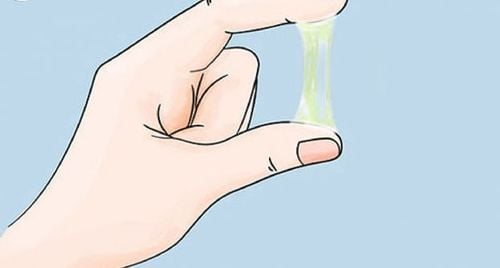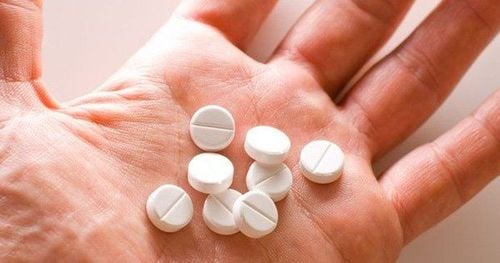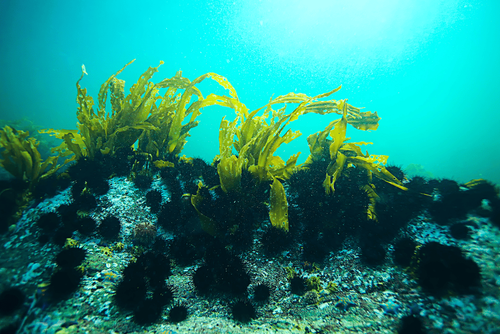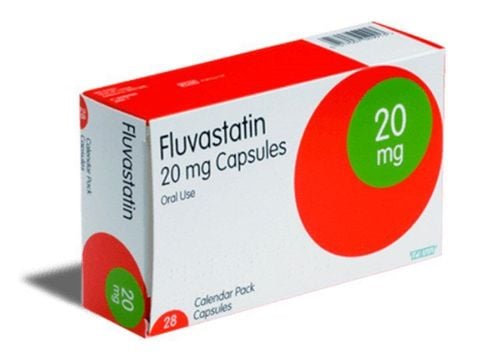This is an automatically translated article.
“Is it good for children to eat seaweed” or “should they eat grape seaweed” is a question asked by many parents raising small children. It is known that in seaweed, grape seaweed is rich in minerals, trace elements and other special nutrients, so if children are used seaweed or grape seaweed, it will bring many good health benefits.
1. Grape seaweed and nutritional composition of grape seaweed
Sea grape seaweed is also a type of algae but has the shape of a bunch of grapes and is also known by another name, green caviar. Caviar is known as an expensive dish and is usually only used by the elite.
Grape seaweed is exploited and used as a vegetable food. However, the content of nutrients in grape seaweed is quite special and more than that of common vegetables. In Vietnam, grape seaweed has been grown from Japanese varieties in Khanh Hoa province. Using fresh grape seaweed or raisin seaweed both brings dishes with many health benefits.
2. The benefits of grape seaweed for health
Nutritional composition of grape seaweed, seaweed contains many good and precious compounds to help improve health and prevent many dangerous diseases.
Grape seaweed has the ability to help strengthen bones. With the nutrient content in grape seaweed rich in protein, calcium and polyunsaturated fatty acids such as omega 3 or DHA, EPA, ALA has a very good effect to help fight inflammation and reduce symptoms related to disease arthritis . When using this type of seaweed regularly, it will help the body have a supple and strong skeleton and reduce the risk of fractures in middle-aged people. Grape seaweed helps to improve eyesight because the seaweed's composition is rich in iron and vitamin A, which helps to enhance the function of the optic nerve system in the body, while improving eyesight and preventing related diseases. about eyes such as night blindness, dry eyes, bitot streaks... Grape seaweed has a special role in helping to reduce the risk of diabetes because the composition of grape seaweed contains quite high levels of vitamin C, which is effective. Helps prevent and improve symptoms associated with diabetes. For example, grape seaweed can help the body control blood sugar and free radical activity, thereby helping to reduce the accumulation of sorbitol in the cells, and inhibit the binding of glucose to protein. The two activities of sorbitol accumulation and glycosylation are commonly associated with complications of diabetes, especially those involving the eyes and nerves.

Trẻ em ăn rong nho có tốt không đang được nhiều bậc cha mẹ quan tâm
Grape seaweed also helps improve heart health, because the composition of grape seaweed is rich in polyunsaturated fatty acids such as AA, LA, EPA, ALA, which have the effect of helping to lower cholesterol, and at the same time increase the elasticity of blood vessels. blood. These compounds in grape seaweed, in addition to preventing oxidation and maintaining the collagen structure of the arteries, also help prevent strokes, atherosclerosis or myocardial infarction. The fatty component in grape seaweed will help protect the cell membranes of the skin, and at the same time improve the elasticity of the blood vessels to help reduce symptoms related to dry skin. Moreover, grape seaweed also promotes the production of collagen and antioxidants, so it slows down the aging process of the skin as well as improves the condition of the skin and hair. Grape seaweed can be used for subjects suffering from constipation. The calorie and sugar content in grape seaweed is very small, but when entering the body, it allows bacteria to easily digest food and excrete waste from the body easily and quickly. Therefore, using grape seaweed in the diet can help treat constipation in both adults and children. Grape seaweed has a low sugar content but is rich in other nutrients such as calcium, iron, zinc, plant-based protein, vitamin C and polyunsaturated fatty acids. These compounds make grape seaweed considered a nutritious and safe food when used by people who are overweight or on a diet. Grape seaweed contains Fucoidan which is known as an excellent natural anti-cancer agent. Scientific studies have proven that Fucoidan has the ability to provide compounds that help effectively treat cancer. In addition, researchers in Japan also discovered the role of Fucoidan that can assist in the treatment of leukemia, lymphoma, colon cancer...
3. Is it good for children to eat seaweed?
“Is it good for children to eat seaweed?” or parents “should let them eat seaweed” is a question many parents ask. In seaweed, grape seaweed is rich in minerals and trace elements. Moreover, this type of food also contains very high special nutrients, so it is very good if children can use seaweed or grape seaweed.
Not only that, the fiber content in seaweed and grape seaweed is quite abundant, which can help the child's digestive system work smoothly. At the same time, the content of polyunsaturated fatty acids is quite rich including DHA, EPA, ALA, ... to help children develop well in terms of brain. Other nutritional components in seaweed, grape seaweed also help children strengthen muscle and bone development and strengthen children's resistance.
However, "is it good for children to eat a lot of seaweed?" is another matter, because any food, when eaten in excess, also causes some unwanted side effects. Therefore, when using seaweed and grape seaweed for children, parents should note:
The recommended age to use seaweed and grape seaweed is children over 6 months old, when their digestive system Children are at the stage of complete development and are not as immature as they were at birth, so parents can add seaweed and grape seaweed to their child's diet. Parents can also use ready-made seaweeds for babies, such as instant baby seaweeds. In the composition of seaweed and grape seaweed contain quite high iodine content, parents should only feed children into meals and not eat too much at once. Depending on the amount of addition to the meal, parents should feed their children about 1 to 2 times a week. Seaweed and grape seaweed may not be suitable for stunted children because these foods are fat-absorbing and help maintain weight. Because this type of food can cause allergies in children, when using it, parents need to let children get used to it and monitor it for any signs of happening. If the child uses it and has symptoms such as difficulty breathing, nausea, the child must be taken to a medical facility immediately.

Rong biển ăn liền cho bé phù hợp với trẻ trên 6 tháng tuổi
4. Some ways to process seaweed and grape seaweed
Parents can use fresh grape seaweed for babies. Grape seaweed will be washed with fresh water and soaked in ice water to remove the natural fishy smell. After about 30 seconds of soaking in water, the grape seaweed will shrivel. At this time, the seaweed can be taken out to eat immediately and the seaweed will be very crispy.
Raisins can be soaked in water for about 3 to 5 minutes, then they will slowly expand and become fresh again. Then, continue to soak in a bowl of ice cold water for a period of 3 minutes to remove the natural fishy smell. After finishing, you can take out the seaweed to dry and eat immediately.
Seaweed and grape seaweed are very good for the health of all subjects, including children. However, when used for children, parents need to pay attention to a few issues as above to be able to effectively use this precious food.













